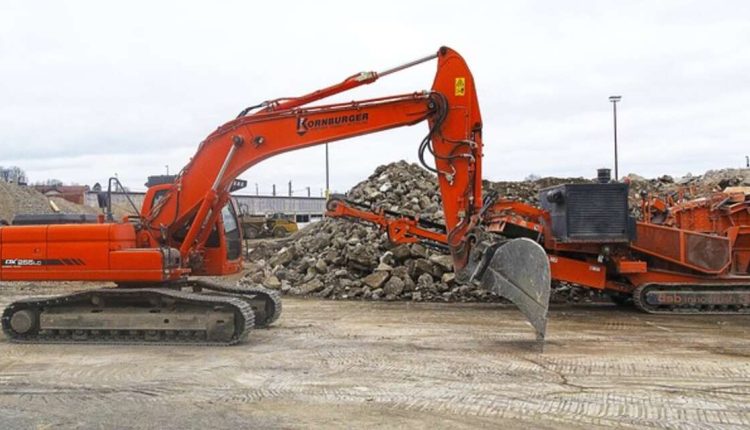Construction demolition can be an intricate and hazardous undertaking if undertaken without careful planning and preparation. Follow these guidelines to avoid accidents and ensure a successful project. Select the best Santa Ana Demolition.
Reusing materials from an older building before demolishing it can save money, and sorting waste for recycling reduces landfill charges.
Most construction and demolition debris can be recycled; according to estimates by the Environmental Protection Agency, in 2018 alone, over 455 million tons were sent for recycling or sent directly to landfills.
Safety
Demolition work presents numerous hazards to workers. These hazards include noise and dust, structural instability, and the risk of debris falling onto workers. To reduce these dangers, necessary safety measures must be implemented, including proper training of staff using appropriate machinery as well as taking appropriate safety precautions.
Workers involved in demolition must also wear personal protective equipment (PPE), such as hard hats, safety glasses or goggles, and gloves. Furthermore, they should become familiar with any heavy equipment being used during this process.
Before initiating demolition work, a comprehensive survey must be performed of both the structure and its surroundings. Next, all-electric, gas, water, and steam sewer service lines, as well as any others, should be shut off or controlled accordingly if possible. Calling your utility company is also strongly suggested prior to commencing any demolition works.
Workers at demolition sites must receive proper training on how to safely operate plants and equipment, with an established written risk assessment in place. Workers should also receive PPE and be trained on its selection, use, fitting, inspection, and maintenance storage. Furthermore, all onsite personnel must communicate effectively.
Preparation
Demolition is often the initial task at any construction site and one of its most hazardous activities. It requires an experienced team to complete it safely and correctly.
The process begins with an inspection of the structure itself, including an assessment of its type, demolition equipment needs, and safety precautions required for its demolition. Furthermore, an inventory is performed of any potentially hazardous materials like asbestos or lead paint, which require special consideration before proceeding further with demolition activities.
Once the inspection has concluded, the contractor should prepare an engineering survey. This consists of an overall plan and list of equipment and personnel required, in addition to any potential hazards or risks during demolition, such as fires or cave-ins that could occur.
Surveys should include plans for disconnecting any utilities still connected to a building or structure, such as water, gas, and electricity services. Disconnecting these utilities before beginning demolition helps minimize the risk of accidents and injuries and notifies local fire departments and utility providers that the property will be demolished. Warning signs must also be posted around the demolition site to keep people aware.
Debris
Debris removal is an integral component of demolition. This involves collecting broken slabs of concrete, rusty metal scraps, and any other scrap materials found around a job site. Some debris may contain hazardous substances, which must be handled according to safety protocols; any material contaminated with asbestos or lead must also be cleared away prior to beginning work at any site.
The Environmental Protection Agency estimates that in 2018 alone, the United States generated 600 million tons of Construction and demolition waste, 90% of which was from demolition, while only 10% came from construction projects.
Most C&D debris winds up in landfills, but some can be reused or recycled instead. Reusing salvaged building materials can save money on demolition costs while simultaneously helping reduce environmental impacts. Sorting and recycling building materials on-site also helps minimize C&D waste.
As part of the disposal or recycling process, contractors must adhere to state and local regulations regarding waste management and transportation. Documents and permits may be needed when transporting debris from construction sites to processing or disposal facilities. Some states even mandate recycling a percentage of C&D material produced; such recycling could then be used to make road surfaces.
Disposal
The Environmental Protection Agency (EPA) states that recycling construction and demolition materials generates jobs, wages, and tax revenues in the US. Waste reduction also saves on materials costs while decreasing embodied energy, greenhouse gas emissions, water pollution from the extraction/transport of raw materials, and air/water pollution associated with extraction/transport.
Non-hazardous construction and demolition debris can generally be dumped with regular trash at a landfill, but asbestos, lead, and other regulated wastes (like asbestos or lead paint) must be separated prior to disposal to minimize environmental risks and costs from non-compliance fees. Although this might take more time, it will help protect our planet while saving money, and no non-compliance fees will be assessed against you!
Materials should be sorted for recycling or reuse either at a landfill or directly at the job site. This goal should be achieved for items such as joists, siding, insulation, and other structural materials that do not contain harmful substances.
Depending on your location, C&D landfills or transfer stations may provide valuable services for waste generated during the construction and demolition of buildings, homes, roads, and other structures. Contact these facilities beforehand to see what items they accept, disposal fees, hours of operation, and delivery instructions; building material reuse grants may also offer funds that encourage reuse.

